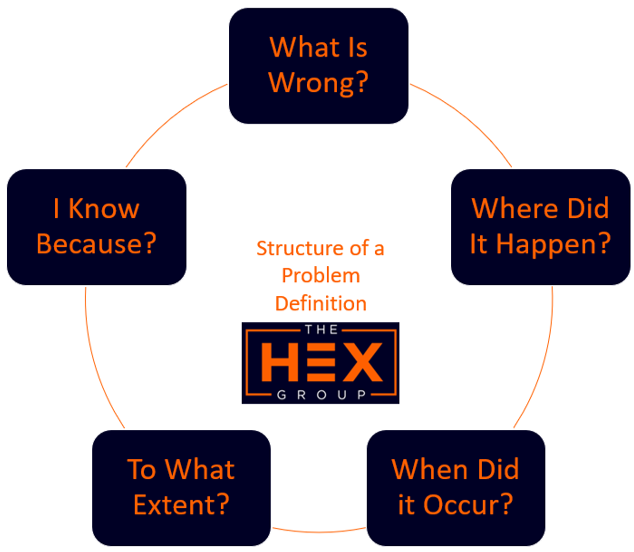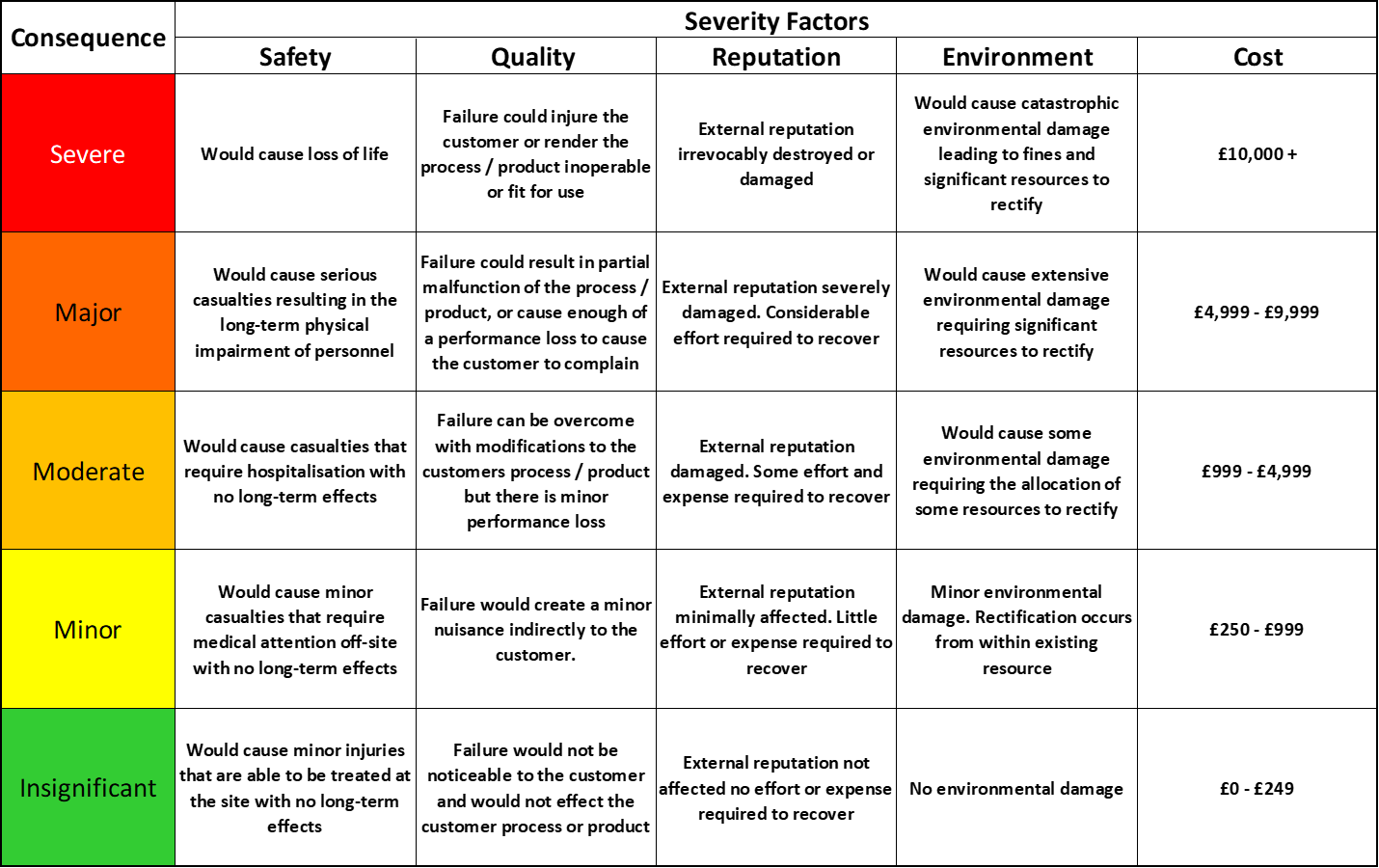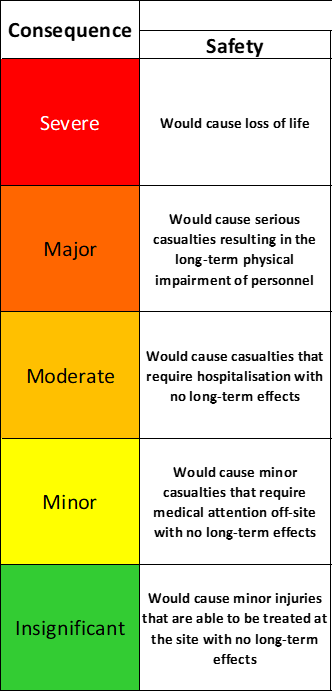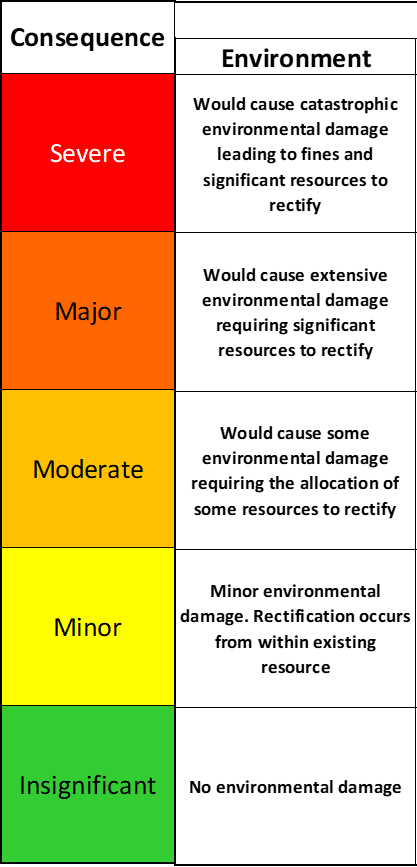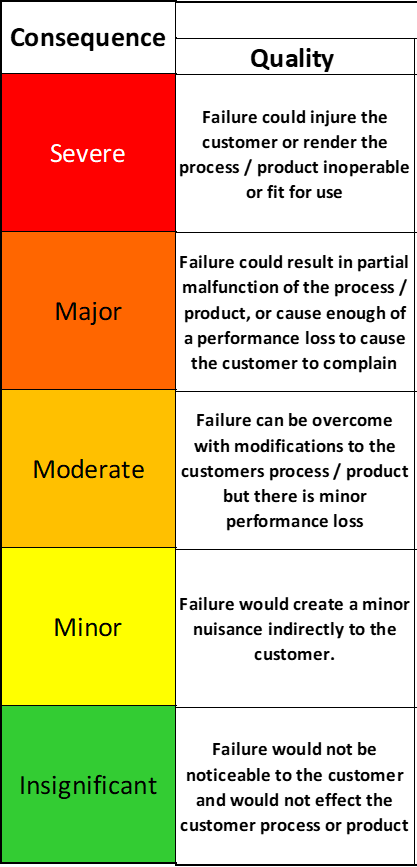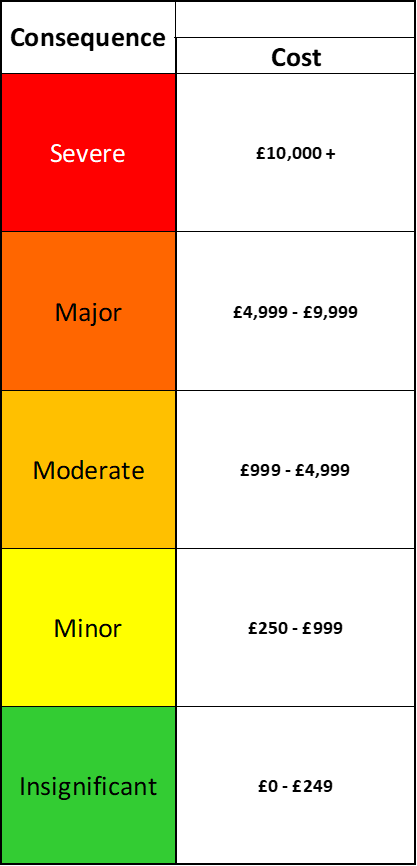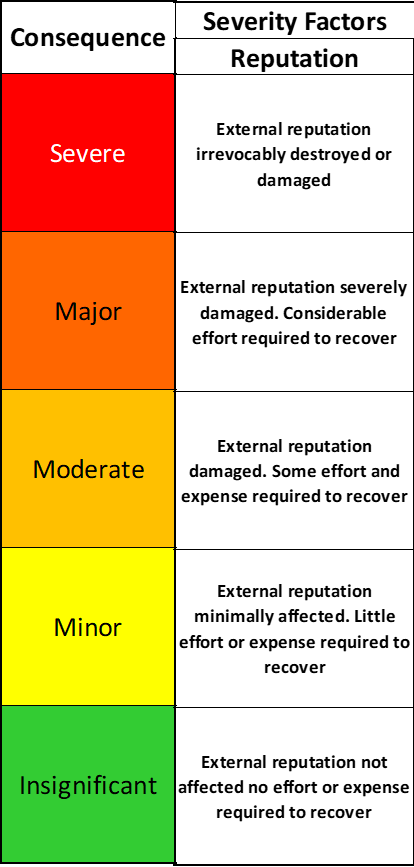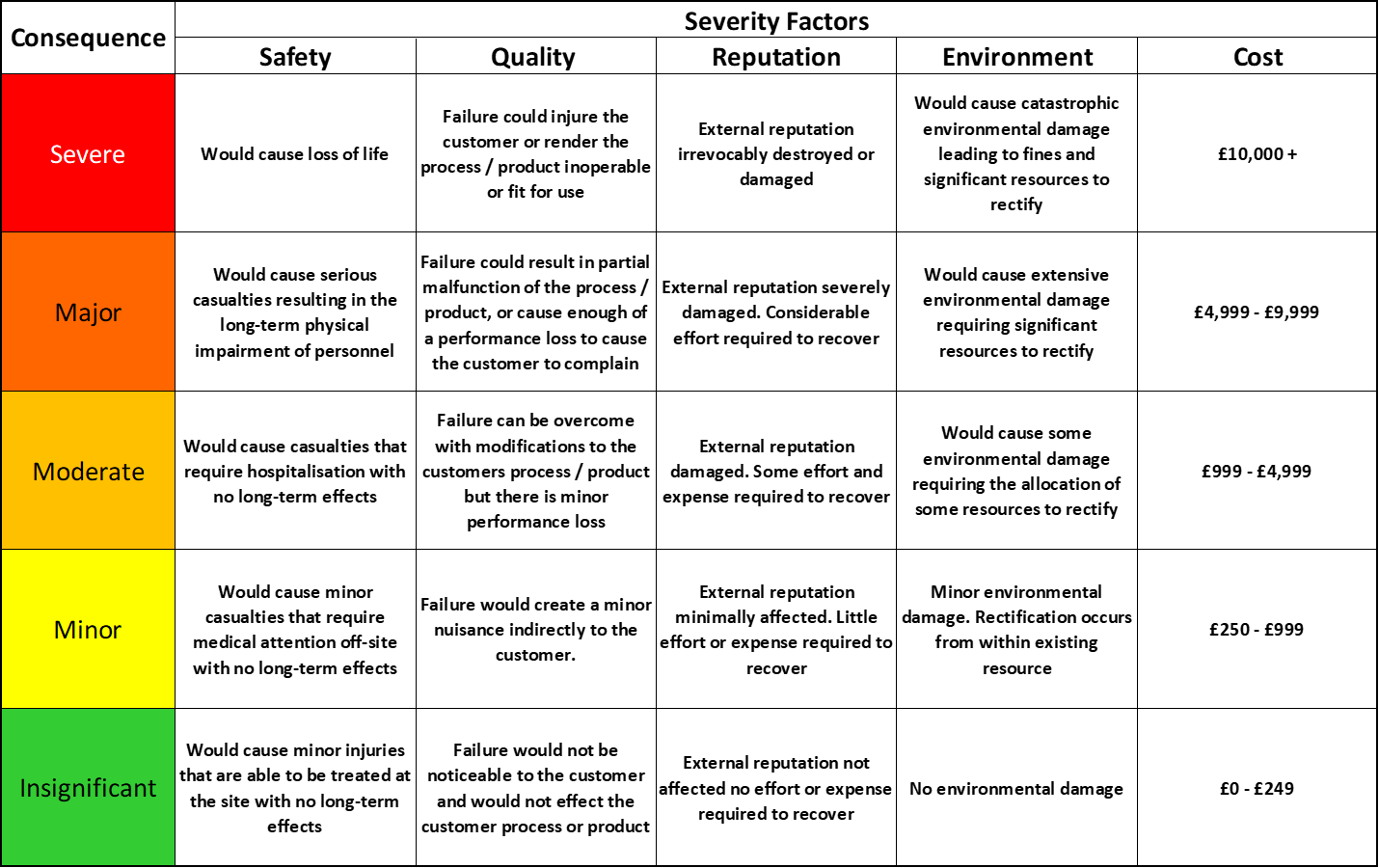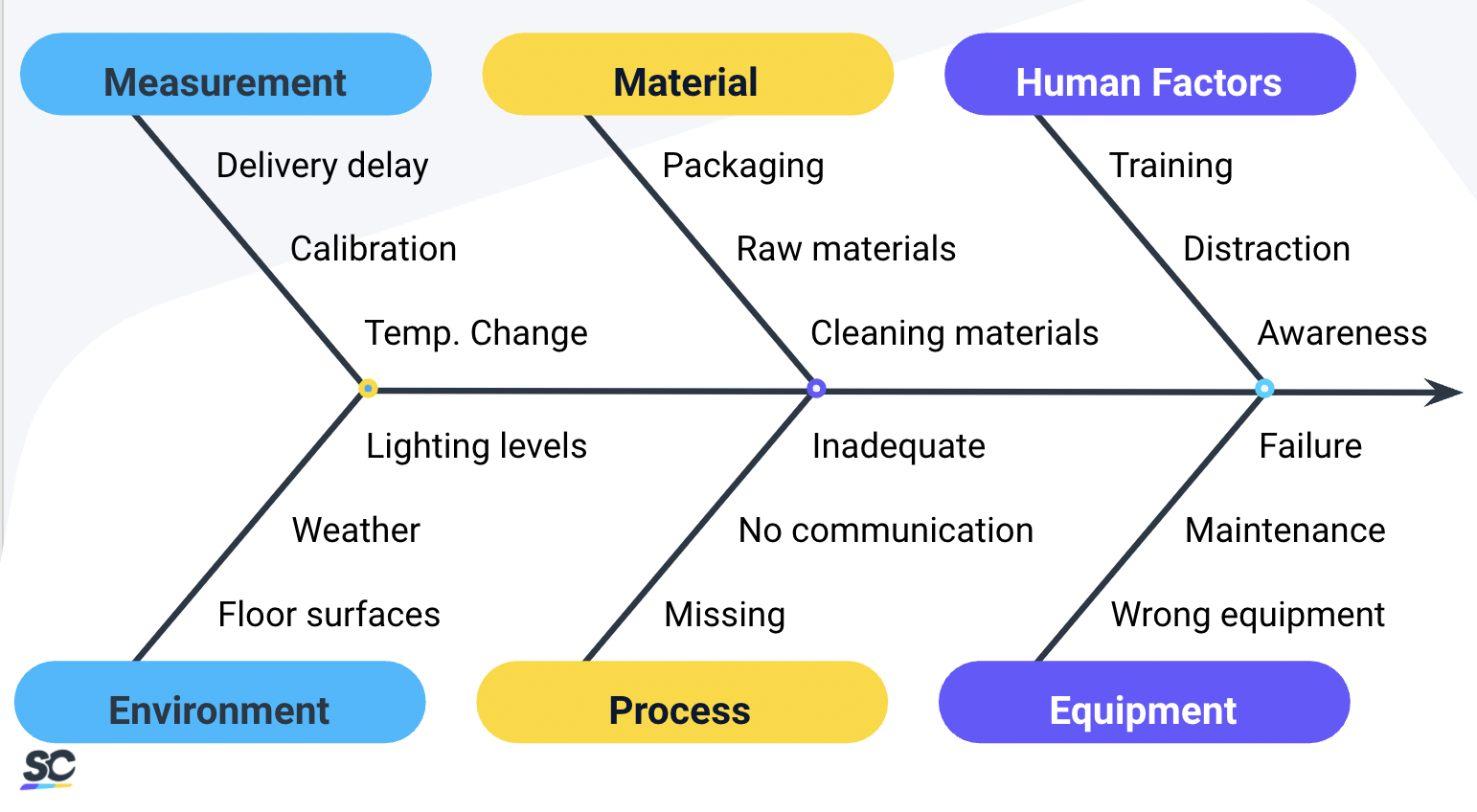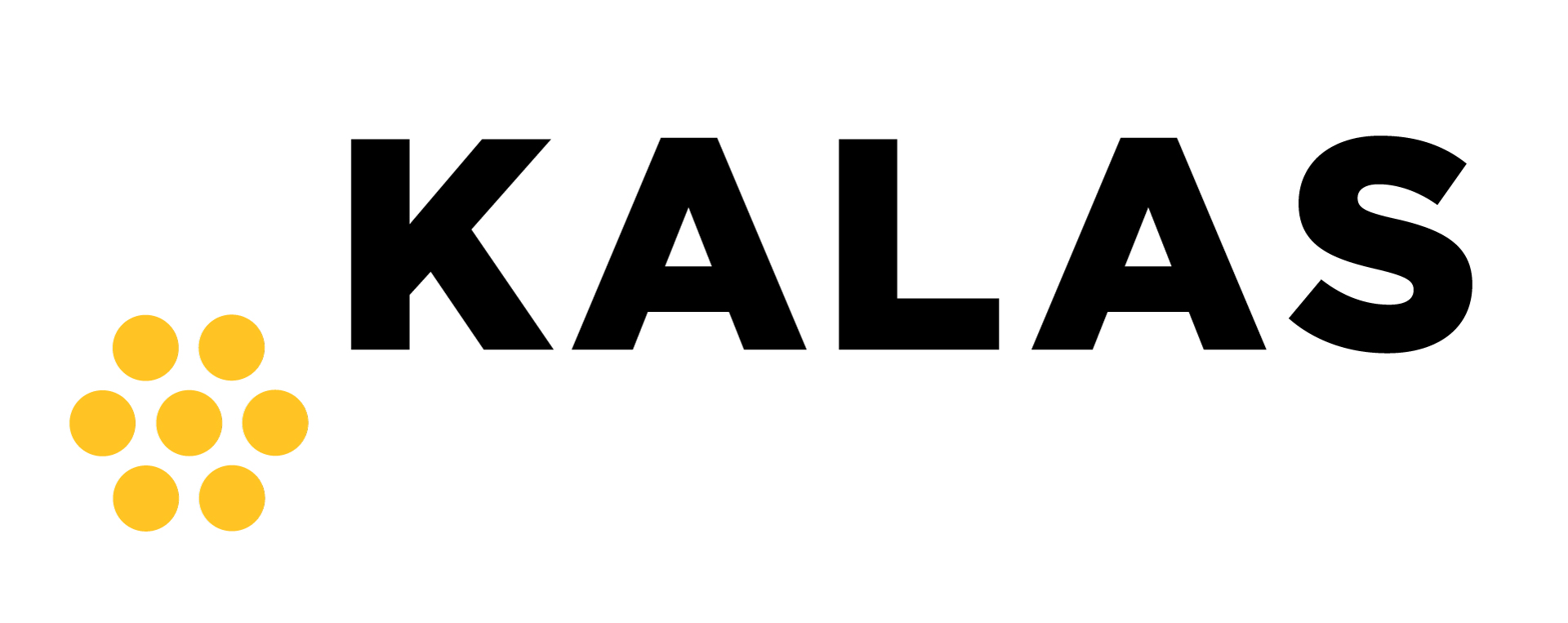Title Page
-
RCA Investigation Number
-
Location?
-
Conducted on?
-
Document created by?
-
Brief problem title?
Detailed Problem
-
An effective problem statement aims to identify the gap between the current state (the problem) and the desired state (the goal) of a process or product.
-
What is the detailed problem?
Interim Containment
-
Describe what has been put in place to stop the issue from escalating?
- Human factors
- Materials
- Measurement
- Equipment
- Process
- Environment
- N/A
-
What containment has been implemented to improve the human factor cause?
- Lessons Learnt communicated
- Re-trianing
- Team briefs / toolbox talks
- review / evaluate desired output
- Competency evaluation
- Further investigation
- Other
-
Has this action been completed?
-
Detail action
-
Has this action been completed?
-
Detail Action
-
Has this action been completed?
-
Detail action
-
Has this action been completed?
-
Detail action
-
Has this action been completed?
-
Detail action
-
Has this action been completed?
-
Detail action
-
Has this action been completed?
-
Detail action
-
What containment has been implemented to improve the materials used?
- New supplier
- Improved materials
- Supply chain review
- Value stream mapping
- Specification update
- Other
-
Has this action been completed?
-
Detail action
-
Has this action been completed?
-
Detail action
-
Has this action been completed?
-
Detail action
-
Has this action been completed?
-
Detail action
-
Has this action been completed?
-
Detail action
-
Has this action been completed?
-
Detail action
-
What containment has been implemented to improve the measurement aspects?
- Re-calibration
- Delays managed
- New tooling
- SOP creating
- Inspection Control plan
- Other
-
Has this action been completed?
-
Detail action
-
Has this action been completed?
-
Detail action
-
Has this action been completed?
-
Detail action
-
Has this action been completed?
-
Detail action
-
Has this action been completed?
-
Detail action
-
Has this action been completed?
-
Detail action
-
What containment has been implemented to improve the equipment used?
- Fixed equipment
- Quarantined equipment
- Disposed of equipment
- TPM creation
- Training / SOP
- Maintenance
- Other
-
Has this action been completed?
-
Detail action
-
Has this action been completed?
-
Detail action
-
Has this action been completed?
-
Detail action
-
What containment has been implemented to improve the process?
- Process reviewed / updated
- Process written
- process risk analysis
- Follow process
- Value stream mapping
- Other
-
Has this action been completed?
-
Detail action
-
Has this action been completed?
-
Detail action
-
Has this action been completed?
-
Detail action
-
Has this action been completed?
-
Detail action
-
Has this action been completed?
-
Detail action
-
Has this action been completed?
-
Detail action
-
What containment has been implemented to improve the environment associated with the problem?
- Improved waste management
- Additional spill equipment
- Controlled work area
- Review / write risk assessment
- Create process flow
- Consult authority
- Other
-
Has this action been completed?
-
Detail action
-
Has this action been completed?
-
Detail action
-
Has this action been completed?
-
Detail action
-
Has this action been completed?
-
Detail action
-
Has this action been completed?
-
Detail action
-
Has this action been completed?
-
Detail action
-
Has this action been completed?
-
Detail action
Risk Matrix
-
When determining the severity of the effect, if applicable select the highest severity of the problem if the problem has an effect on multiple areas. (example chart below) This can be revisited and updated later through the investigation.
-
Area of effect information example
- Safety
- Quality
- Reputation
- Environment
- Cost
-
The risk of actual and potential effects to health. the likelihood that a person may be harmed or suffers adverse health effects if exposed to a hazard.
-
Environmental damage or degradation is the deterioration of the environment through depletion of resources such as air, water and soil; the destruction of ecosystems and the extinction of wildlife. It is defined as any change or disturbance to the environment perceived to be deleterious or undesirable.
-
The severity is measured in the the voice of the customer, and the chance of producing a non conforming output.
-
A financial measure that captures the cost of poor quality in a manufacturing or service organization. It includes all costs associated with producing or delivering a product or service that does not meet the required standards.
-
Reputational damage is the loss to financial capital, social capital and/or market share resulting from damage to a firm's reputation.
-
Record the highest severity of effect (1 being low - 5 being high)
-
Probability
Also called likelihood, the Probability (x-axis) pertains to the extent of how likely it is for the risk to occur. The 5 risk rating levels under this component are as follows:
Score -
Very Unlikely – unlikely to happen and/or have minor or negligible consequences - 1
Unlikely – possible to happen and/or to have moderate consequences - 2
Possible – likely to happen and/or to have serious consequences - 3
Likely – almost sure to happen and/or to have major consequences - 4
Very Likely – sure to happen and/or have major consequences - 5 -
Record likelihood of effect (1 being low - 5 being high)
Team
Required Team
-
Risk Factor Score -
-
White Team
Low overall risk -
Problem to be completed and reviewed by department, along with corrective action -
Green Team
Low risk identified
You are advised this root cause and corrective action needs to be completed using the below -
Record multi department conversations / actions
5 Why’s
Action Plan -
Yellow Team
Moderate risk identified
You are advised this root cause and corrective action needs to be completed using the below -
Medium sized multi department Team (affected departments)
5 Why’s
Brainstorm
Action Plan / Corrective action -
Red Team
Extremally high risk identified
You are advised this root cause and corrective action needs to be completed using the below -
Large sized multi department Team (effected departments)
5 Why’s
Fishbone / Ishikawa
Brainstorm
Action Plan / Corrective action
Team Members
-
Name / Team role if applicable?
-
Name / Team role if applicable?
-
Name / Team role if applicable?
-
Name / Team role if applicable?
-
Name / Team role if applicable?
-
Name / Team role if applicable?
-
Name / Team role if applicable?
-
Name / Team role if applicable?
-
Name / Team role if applicable?
-
Name / Team role if applicable?
-
Please detail the cause and effect data in regards to the problem statement and the output. Included all measurable data available. This is an opportunity to record the effect of the problem.
Effect data
-
Area of effect
-
Record the specific effect data
Investigation Route
-
Investigation route
Action Plan / Priority List
-
Define which causes have more effect on the problem. In order to resolve it, define a priority list and plan to resolve each cause (and sub-cause) and do corrective actions. Also, analyse which causes should be managed as a risk.
Corrective Action
-
Create a corrective action plan using the attached actions function. Set realistic achievable actions to be completed. Set the completion date and ensure the action is correctly assigned.
Preventative Actions
-
Create an preventative action plan using the attached actions function. Set realistic achievable actions to be completed. Set the completion date and ensure the action is correctly assigned.
Permanent Corrective Action
-
Has the problem reoccurred since implementation of all actions.
-
The root cause analysis should be reviewed and additional prevenatative actions implemented
-
Check box when new actions have been completed.
-
Has the procedure/ process been updated?
-
What is the new revision / version and date?
-
Is a FMEA review needed?
-
What has been added to the relevant FMEA?
-
Have the results and improvements been communicated to all affected persons?
-
If the answer is yes to all of the above in this section, then the investigation is ready to be closed
5 Whys
-
What is the problem you are going to root cause analyse
-
Why?
-
Why?
-
Why?
-
Why?
-
Why?
Action Plan / Priority List
-
Define which causes have more effect on the problem. In order to resolve it, define a priority list and plan to resolve each cause (and sub-cause) and do corrective actions. Also, analyse which causes should be managed as a risk.
Corrective Action
-
Create a corrective action plan using the attached actions function. Set realistic achievable actions to be completed. Set the completion date and ensure the action is correctly assigned.
Preventative Actions
-
Create an preventative action plan using the attached actions function. Set realistic achievable actions to be completed. Set the completion date and ensure the action is correctly assigned.
undefined
-
Has the problem had reoccurred since implementation of all actions.
-
The root cause analysis should be reviewed and additional prevenatative actions implemented
-
Check box when new actions have been completed.
-
Has the procedure/ process been updated?
-
Have the results and improvements been communicated to all affected persons?
-
If the answer is yes to all of the above in this section, then the investigation is ready to be closed
5 Whys
-
What is the problem you are going to root cause analyse
-
Why?
-
Why?
-
Why?
-
Why?
-
Why?
Ishikawa / Fish bone
-
Ishikawa diagram, also called the Fishbone diagram, is a tool used to identify problems in a system. It shows how causes and effects are linked and helps analyze what is going wrong with systems, processes, and products.
-
Measurement
-
Material
-
Human Factors
-
Environment
-
Process
-
Equipment
Action Plan / Priority List
-
Define which causes have more effect on the problem. In order to resolve it, define a priority list and plan to resolve each cause (and sub-cause) and do corrective actions. Also, analyse which causes should be managed as a risk.
Corrective Action
-
Create a corrective action plan using the attached actions function below. Set realistic achievable actions to be completed. Set the completion date and ensure the action is correctly assigned.
Preventative Actions
-
Create an preventative action plan using the attached actions function below. Set realistic achievable actions to be completed. Set the completion date and ensure the action is correctly assigned.
Permanent Corrective Action
-
Has the problem reoccurred since implementation of all actions.
-
The root cause analysis should be reviewed and additional prevenatative actions implemented
-
Check box when new actions have been completed.
Closing Section
-
Has the procedure/ process been updated?
-
Have the results and improvements been communicated to all affected persons?
-
If the answer is yes to all of the above in this section, then the investigation is ready to be closed
5 Whys
-
What is the problem you are going to root cause analyse
-
Why?
-
Why?
-
Why?
-
Why?
-
Why?
Ishikawa / Fish bone
-
Ishikawa diagram, also called the Fishbone diagram, is a tool used to identify problems in a system. It shows how causes and effects are linked and helps analyze what is going wrong with systems, processes, and products.
-
Measurement
-
Material
-
Human Factors
-
Environment
-
Process
-
Equipment
Action Plan / Priority List
-
Define which causes have more effect on the problem. In order to resolve it, define a priority list and plan to resolve each cause (and sub-cause) and do corrective actions. Also, analyse which causes should be managed as a risk.
Corrective Action
-
Create a corrective action plan using the attached actions function. Set realistic achievable actions to be completed. Set the completion date and ensure the action is correctly assigned.
Preventative Actions
-
Create an preventative action plan using the attached actions function. Set realistic achievable actions to be completed. Set the completion date and ensure the action is correctly assigned.
Permanent Corrective Action
-
Has the problem had reoccurred since implementation of all actions.
-
The root cause analysis should be reviewed and additional prevenatative actions implemented
-
Check box when new actions have been completed.
-
Has the procedure/ process been updated?
-
Have the results and improvements been communicated to all affected persons?
-
If the answer is yes to all of the above in this section, then the investigation is ready to be closed
Revaluation
Risk Matrix
-
When determining the severity of the effect, if applicable select the highest severity of the problem if the problem has an effect on multiple areas. (example chart below) This can be revisited and updated later through the investigation.
-
Area of effect information example
- Safety
- Quality
- Reputation
- Environment
- Cost
-
The risk of actual and potential effects to health. the likelihood that a person may be harmed or suffers adverse health effects if exposed to a hazard.
-
Environmental damage or degradation is the deterioration of the environment through depletion of resources such as air, water and soil; the destruction of ecosystems and the extinction of wildlife. It is defined as any change or disturbance to the environment perceived to be deleterious or undesirable.
-
The severity is measured in the the voice of the customer, and the chance of producing a non conforming output.
-
A financial measure that captures the cost of poor quality in a manufacturing or service organization. It includes all costs associated with producing or delivering a product or service that does not meet the required standards.
-
Reputational damage is the loss to financial capital, social capital and/or market share resulting from damage to a firm's reputation.
-
Record the highest severity of effect (1 being low - 5 being high)
-
Probability
Also called likelihood, the Probability (x-axis) pertains to the extent of how likely it is for the risk to occur. The 5 risk rating levels under this component are as follows:
Score -
Very Unlikely – unlikely to happen and/or have minor or negligible consequences - 1
Unlikely – possible to happen and/or to have moderate consequences - 2
Possible – likely to happen and/or to have serious consequences - 3
Likely – almost sure to happen and/or to have major consequences - 4
Very Likely – sure to happen and/or have major consequences - 5 -
Record likelihood of effect (1 being low - 5 being high)
Sign off
Corrective Action Verification
-
Provide evidence that the corrective measures in place are effective.
End of Investigation - Sign off
-
Score before root cause and corrective action -
-
Revaluated score post correction -
-
Problem Sign Off
-
Document completed by?
-
Completion Date
-
Document completed by?
-
Department Manager signature
-
Completion Date
-
Problem champion sign off
-
Manager sign off
-
Completion Date
-
Problem champion sign off
-
Manager sign off
-
Director sign off
-
Completion Date






